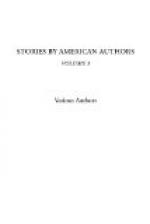In the Narrows, torpedoes were moored at distances of one hundred feet apart, and were connected with the shore by electric wires. At various points along the beach shell-proof huts were constructed, to which these wires led. In each hut was arranged a camera lucida, so that a picture of the harbor, over a limited area, was thrown upon a whitened table. In this way an observer could recognize the instant an enemy’s vessel arrived over a sunken mine, and could explode the latter by simply touching a button which allowed the electric current to pass to the torpedo. In the Harbor channels the torpedoes were so arranged as to be exploded on contact of an enemy’s vessel with a partially submerged buoy.
The torpedo-stations on Staten and Coney Islands and the Jersey coast were provided with movable fish-torpedoes of the Ericsson and Lay types, intended to be sent out against a hostile vessel, and manoeuvred from the shore. All the steam-tugs in the Harbor were moored in Gowanus bay, and each tug was rigged with a long boom projecting from her bow, on which a torpedo, containing some fifty pounds of dynamite, was carried.
With the tugs, and serving as flag-ship for the squadron, was the U.S. torpedo-boat “Alarm,” Lieutenant-Commander H.H. Gorringe.
The armament of the sea-coast batteries was not calculated to strike terror into the soul of any nation owning a modern ironclad vessel. It consisted mainly of old-fashioned smooth-bore guns, a system of artillery which has been rejected by every European power as the weakest and most inefficient. The greatest range attainable with the best of these cannon was 8000 yards, or some four and one half miles. At one quarter this range their shot would be utterly unable to penetrate even moderately thin armor. Besides these guns there were a few ten and twelve-inch rifles of cast-iron, and hence of unreliable and inferior material; some old smooth-bore cannon, converted into rifles by wrought-iron linings; and a number of mortars and pieces of small calibre, altogether contemptible in the light of the advances made in the art of war during the last quarter of a century.
Meanwhile the inventors were not idle, and the press fairly teemed with novel suggestions for the defense of the city. It was proposed to run all the oil stored in the Williamsburgh refineries into the lower bay, and set it on fire when the enemy’s fleet appeared.
The Herald suggested the raising of a regiment of divers to live in a submarine fort, the guns of which should be arranged to fire upwards into a vessel floating above, and immediately offered to contribute $250,000 to begin the construction of such defenses.
General Newton proposed the building of continuous earthworks on both shores of the bay and Narrows, behind which a broad-gauge railroad should be constructed. On the track he placed heavy platform-cars, each car carrying one heavy gun. Embrasures were made at regular intervals along the embankment. His idea was, that if a hostile vessel made her way into the Harbor, the gun-cars should move along behind the earthworks, keeping abreast of the ship, and thus pour into her a continuous fire. Measures were promptly taken to follow this plan.




